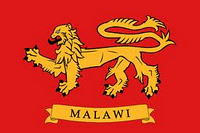A comparison of all consumer markets in terms of their expected consumer expenditure annual real growth in 2014 reveals some interesting fast-growing markets that are not among the usual major emerging markets (such as the BRICS and the MINT). Of the top five fastest growing consumer markets of 2014, Malawi and Sierra Leone are somewhat surprising entrants while Turkmenistan and Saudi Arabia are fast-growing markets with sound fundamentals that can offer significant opportunities for consumer goods companies. Mongolia is also a market with promising prospects, but its small population restricts meaningful market expansion.
Top Five Fastest Growing Consumer Markets: 2014

Source: Euromonitor International from national statistics/Eurostat/UN/OECD
Note: Data are forecasts
1. Malawi: A small market growing from a very low base
With a relatively small market of 16.4 million consumers (as of 2013), the impressive growth in consumer expenditure in this small, landlocked country in Southern Africa is from a very low base. Euromonitor International forecasts that Malawi’s total consumer expenditure will grow by 18.2% year-on-year in real terms in 2014 to reach US$5.6 billion, which translates to a spending level of only US$335 per capita (in constant 2013 prices) in 2014. As such a low level of spending inevitably leads to low consumer demand, business opportunities in Malawi can be limited. Barriers to investment and growth in Malawi are aplenty – including a general shortage of foreign exchange, which affects the country’s ability to pay for imports, and poor infrastructure (roads, energy and telecommunications). In the short term, consumer market growth in Malawi will be supported by the country’s improved economic performance (which will help to raise incomes) and slowing consumer price inflation (which will raise consumer demand).
2. Sierra Leone: Ebola outbreak adds to major challenges
Although Sierra Leone’s consumer expenditure growth in 2014 is forecast at 14.7% year-on-year in real terms (the second fastest expansion globally), this West African nation has a market that is even smaller than Malawi, both in consumer number (6.1 million in 2013) and in total consumer expenditure. Sierra Leone’s consumer expenditure is set to reach US$4.3 billion in 2014, equivalent to US$688 per capita. The country’s consumer spending growth forecasts for 2014 as well as for the short term will likely be revised downwards, as the outbreak of ebola since the summer of 2014 is adding to the challenges (including poverty, youth unemployment, infrastructure deficit and corruption) that the country is already facing on its road to transition from conflict to peace and sustainable economic expansion.
3. Turkmenistan: Robust expansion over an extended period of time
Turkmenistan’s high economic growth sustained over an extended period of time has translated into strong income gains and consumer expenditure growth over the 2008-2013 period. The country’s total consumer expenditure is set to expand by 14.4% year-on-year in real terms in 2014, supported by the fastest annual disposable income real growth globally. Rising incomes and a rapidly expanding middle class will create opportunities over the long term and across many sectors. In particular, communications, education, and leisure and recreation will be the most dynamic sectors in 2014, as these are typically driven by rising middle class demand. Turkmenistan’s per capita consumer expenditure is set to reach US$3,594 in 2014, rising further to US$6,422 in 2020.
4. Saudi Arabia: A sophisticated consumer market with ample opportunities
Compared to all the top five fastest growing markets of 2014, Saudi Arabia posts the highest level of per capita consumer expenditure, which is set to reach US$7,786 in 2014. Saudi Arabia has the largest consumer market in the GCC, worth US$241 billion in 2014. Its large size, combined with the world’s second fastest growth in annual disposable income and developed retail infrastructure, bolsters its appeal to businesses in all sectors.
Hotels and catering is tipped to be the best performing consumer spending category, forecast to climb by 15.6% year-on-year in real terms in 2014, driven by a booming hospitality sector. Next come miscellaneous goods and services, which is expected to record a real upswing of 14.0% in 2014 over a year earlier, on the back of greater luxury spending and a more sophisticated financial scene.
5. Mongolia: Small population restricts market size
Mongolia’s total consumer expenditure is expected to grow by 11.8% year-on-year in real terms in 2014, with per capita spending set to reach US$1,785 in the same year. The country has the smallest population (2.8 million people) of all the top five fastest growing consumer markets of 2014, which can restrict meaningful consumer demand growth. Nevertheless, Mongolia is one of the world’s fastest growing economies and its economic growth over the past decade has translated into falling poverty and rising incomes for Mongolian consumers. As such, the medium term prospects for the Mongolian consumer market are promising.




